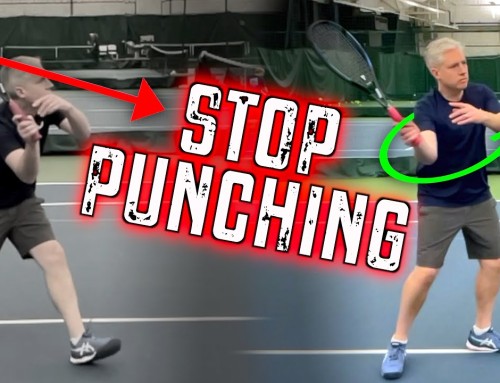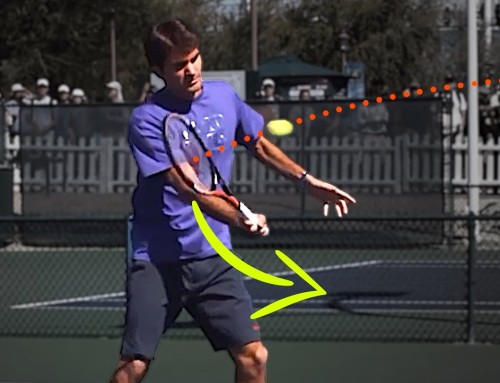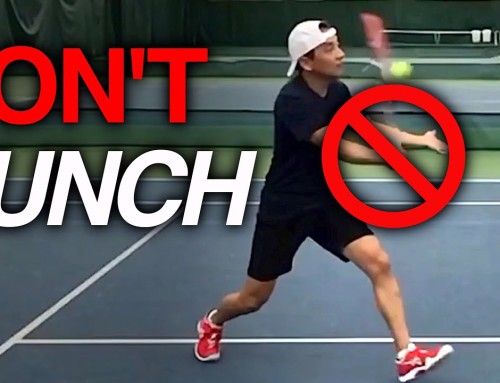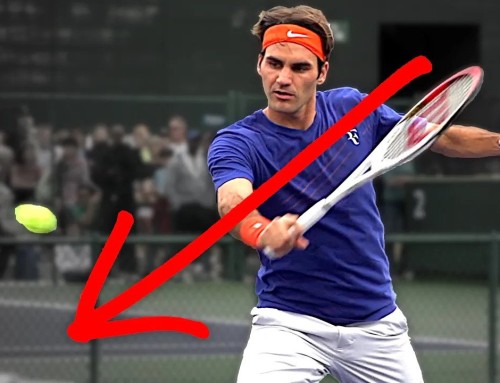I recently worked with Susan, my student, on her volleys, and what we discovered together is something that applies to nearly every recreational player I coach: we’re making tennis way harder than it needs to be.
So, how to make your volleys easy in tennis?
Tennis is already challenging enough on its own. When you add unnecessary complications through poor mechanics, you end up with strokes that are hard to hit, tough on your body, and frustrating beyond belief.
The volley is a perfect example of this, and learning to make your tennis volleys easy with body rotation instead of arm dominance will transform your net game.
Most players approach the volley like it’s some kind of hand-eye coordination test. They stand at the net with their arm doing all the work, trying to guide and control the racket face with precision timing. It’s exhausting, inconsistent, and creates massive anxiety about coming forward.
But here’s what actually needs to happen.
I showed some slow motion footage of Roger Federer hitting forehand volleys, focusing on one specific thing: his chest. What you’ll notice is eye-opening. His chest rotates about 45 degrees through the shot. Not a little twist, not staying square to the net, but a clear, deliberate rotation.
Here’s the key question: what part of his body is doing more work, his arm or his torso?
The answer becomes obvious when you watch closely. His hips turn forward, his chest rotates through that same 45 degree pattern. Meanwhile, his arm and hand remain relatively calm and passive.
Watch the racket at contact and something surprising happens. The racket actually moves backward, away from the contact point, even while his hand continues moving forward. He’s absorbing the pace of the incoming ball with a relaxed hand while his body continues rotating through the shot.
The racket gets pushed back by the ball, but his chest keeps turning. There’s forward motion happening with his body while the racket temporarily moves backward. This is only possible when the arm is passive enough to allow it.
When most recreational players hit volleys, the motion is completely hand dominant. There’s some shoulder rotation and forward stepping, but the hand and racket are hinging, flipping, and twisting through contact. All that extra movement makes consistency nearly impossible.
As long as you have this big hinge in your arm motion, it’s very difficult to be consistent with where the ball goes.
The solution is simple but requires practice. From a ready position, turn your chest 45 degrees. Take a step with your front foot. Then push those 45 degrees forward while simply extending your hand toward the other side.
Turn, step, push through with your body.
We want the arm and hand to move, but it should be very secondary. Most of the energy should come from your torso making that rotation.
This is where precision comes from on volleys. It comes from using your body so you can relax your arm.
We’re flipping the mechanism. We’re empowering the body so the arm can be more precise and passive.
Here’s the challenge.
When you practice without the ball, everything will look great. Your racket face will stay steady and solid. But as soon as the ball enters the equation, especially when the pace picks up, your arm wants to come back to the party. It wants a job to do. The racket face starts twisting and turning again.
This is the battle every player faces when learning proper volley technique. Your body has been conditioned to let the arm do all the work. When things speed up, your default pattern wants to take over.
The solution is repetition with awareness. You have to mentally keep very close tabs on what your arm is doing. Set the position with your arm, then maintain it. Let your body provide the energy and direction while your arm simply holds the racket in position.
If your body doesn’t provide energy, your arm is naturally going to want to take over. There has to be active energy coming from your body.
Think about what happens when you master this technique. Your results become steady and predictable.
You get less stress and anxiety about coming to the net. No more retreating or hanging out in no man’s land because you’re not confident with your volleys.
The volley doesn’t have to be hard. We just have to stop making it harder than it needs to be.
Start close to the net with shadow swings. Focus entirely on that 45 degree chest rotation and pushing through with your body. Only after that pattern feels natural should you add the ball. It all starts with the body doing more work so the arm can do less.
Your Coach,
-Ian







